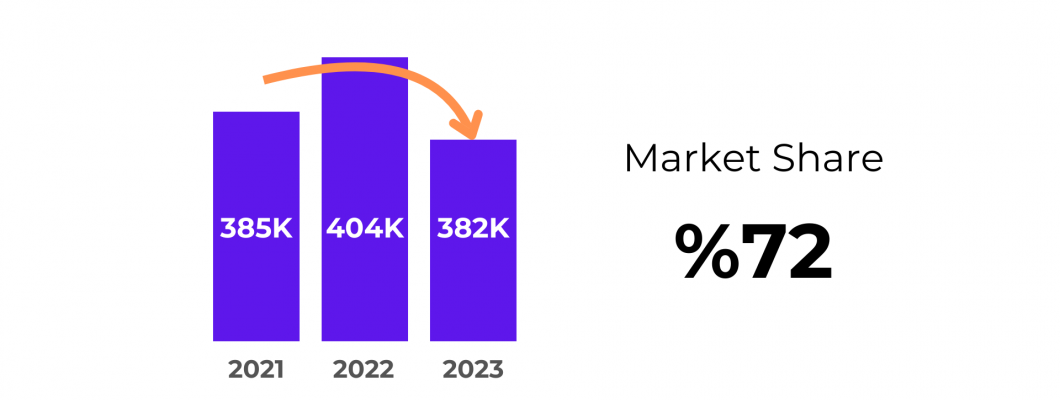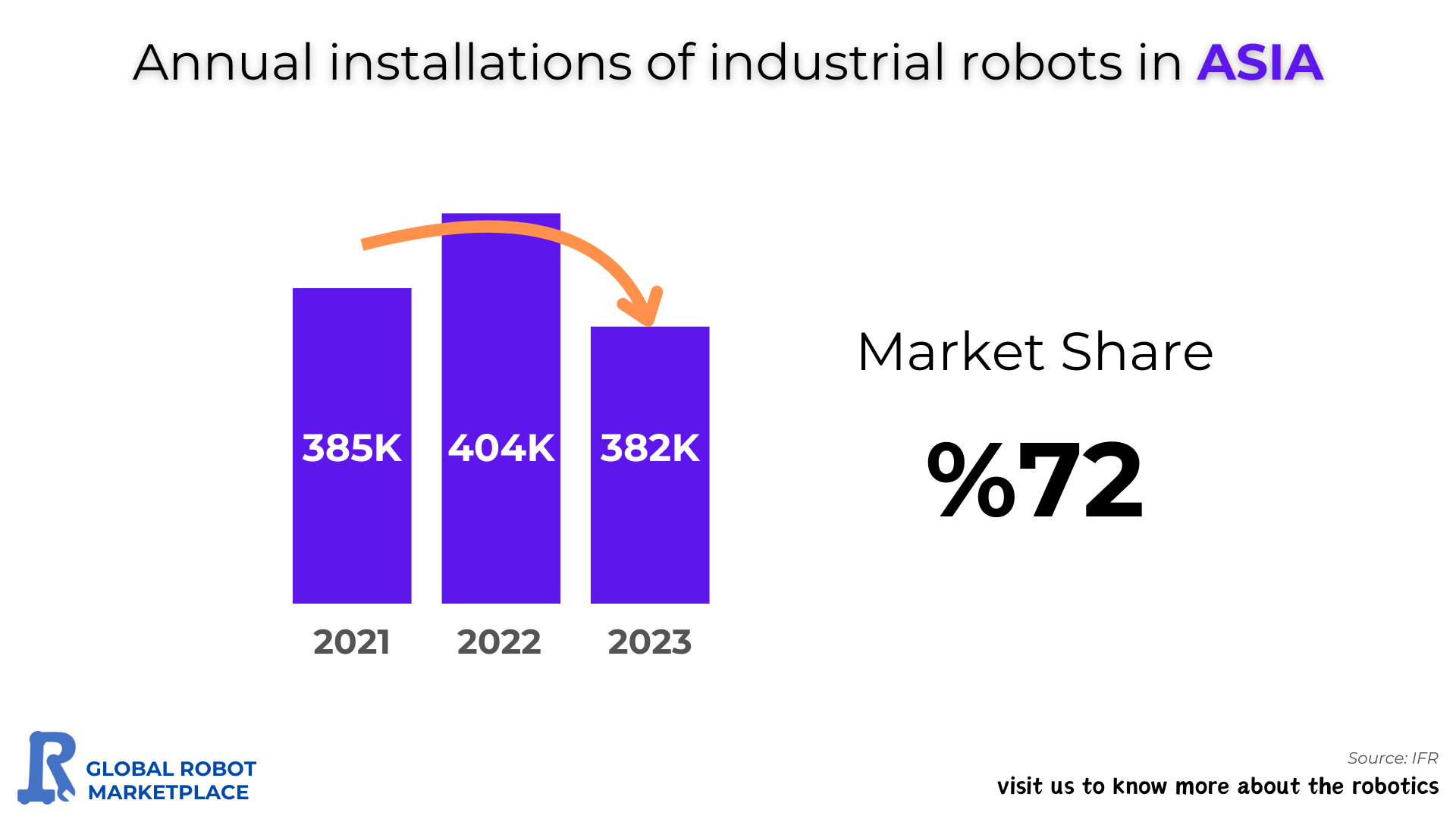
The industrial robots market in Asia has seen significant growth over the past few years, with annual installations showing promising trends, but with fluctuations that reflect the dynamic nature of the industry. According to recent data, Asia remains a powerhouse in terms of industrial robot installations, accounting for 72% of the global market share, a significant number that underscores the importance of the region in the global robotics landscape.

Installation Growth: A Positive Trend
In 2022, Asia saw a slight increase in the number of robot installations, with 404,000 units being added to industrial facilities, compared to 385,000 units in 2021. This growth reflected continued demand in various sectors such as automotive, electronics, and manufacturing, where robots have become integral in enhancing efficiency, precision, and cost-effectiveness.
A Dip in 2023
However, in 2023, the number of installations dipped slightly to 382,000, which represents a decrease from 2022. While the decline is relatively modest, it highlights that the robotics market, though growing, is not immune to external factors such as economic slowdowns, supply chain disruptions, or shifts in manufacturing strategies. Despite this minor decline, the overall market share of Asia remains dominant, with the region accounting for 72% of the global market share.
What Does the Data Tell Us?
The data suggests a stabilization in robot installations after a period of growth. This could be attributed to a variety of factors, including the maturation of certain industries in Asia where robotics has already achieved high penetration. Moreover, the increasing adoption of artificial intelligence (AI) and other automation technologies is likely contributing to changes in how and where robots are being used.
The Road Ahead
Looking ahead, the outlook for industrial robotics in Asia remains positive. Even with the slight dip in 2023, the region continues to be the largest consumer of industrial robots, driven by innovations in manufacturing processes and the continued demand for automation to optimize production. Furthermore, with ongoing developments in artificial intelligence, machine learning, and advanced robotics, it's expected that robotics will continue to evolve and play a crucial role in the future of industrial operations.
As Asia leads the charge in industrial automation, companies in the region must continue to embrace technological advancements to maintain competitive advantages in the global marketplace.
In conclusion, while the decline in installations in 2023 may raise questions, the long-term trends in Asia’s robotics sector are still promising. With its massive market share, Asia’s role in the global robotics market remains vital, and the future holds a great deal of promise as technology continues to advance.
